We all know that bulb planting has to happen in mid fall, right? Wrong.
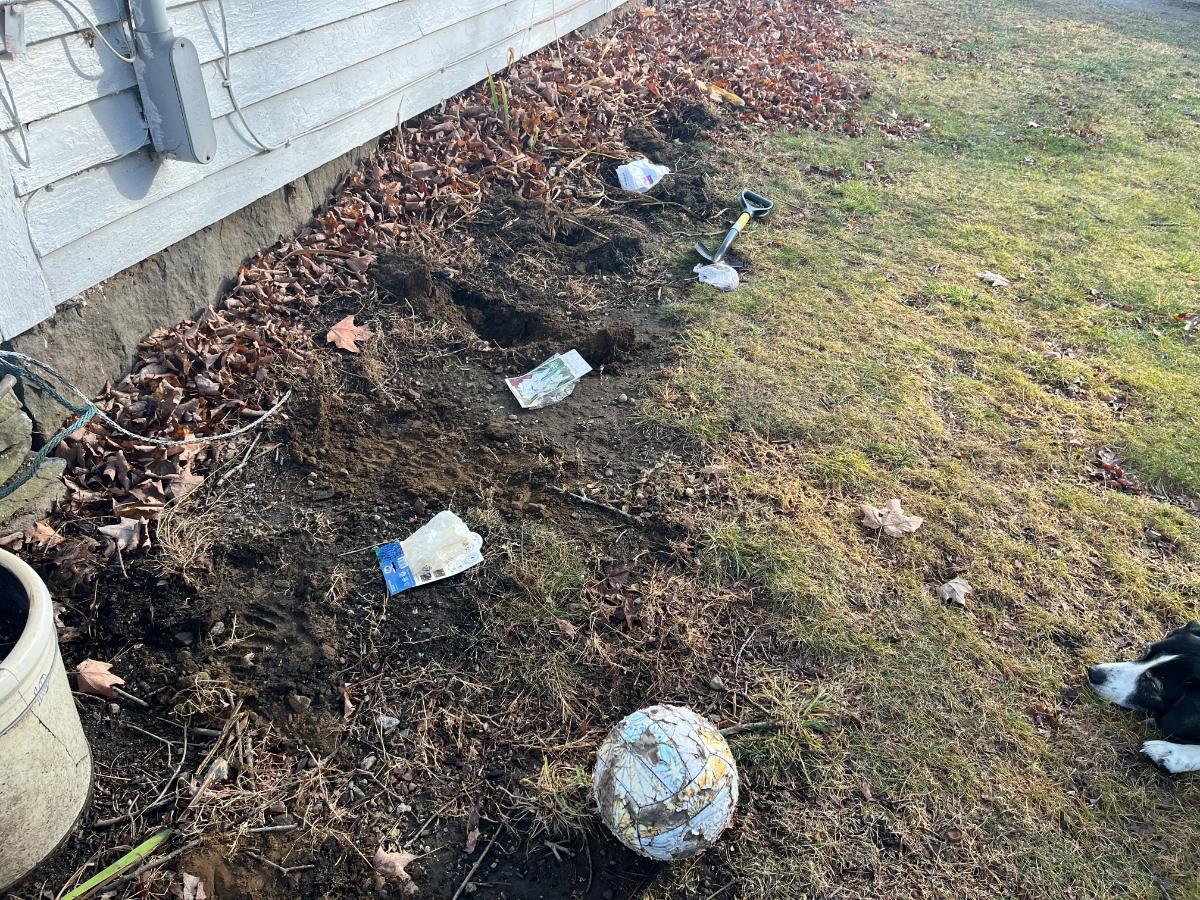
Truth be told, if you can work your soil, you can plant. Even the famed Holland Bulb Company lists planting dates for spring blooming bulbs as any time the ground is not frozen.
So if you had a busy fall and didn't get bulbs in the ground, if the ground isn’t frozen where you live, there is still time.
Jump to:
- The truth is, you can plant bulbs quite late in the year
- Make fast work of procrastinated fall/winter planting
- But you can use this for on-time bulb planting, too!
- Whole Bag Clump and Dump Bulb Planting Method: How To
- What will your bulb garden look like when you use the Clump and Dump Whole Bag bulb planting method?
- What about bulb direction and growth?
- Sometimes, procrastinating bulb planting can really work out!
The truth is, you can plant bulbs quite late in the year
Mid fall may be the “ideal” time to plant bulbs -- or more accurately, this may have been the ideal time according to historical norms of climate and weather. But there’s nothing very historically normal about most of our falls and winters these days. Many of us are warming along with the planet.
While we, as gardeners and growers, used to be able to point to a date on a calendar and reliably predict the general weather and planting conditions then, that’s becoming less and less the case.
These days, we have to rely a bit more on what’s actually happening outside. That can be tricky, but it can serve us well, too, especially when we are behind on timely planting tasks like getting spring-blooming flower bulbs (or edible bulbs like garlic) in the ground.
The truth is, we have a lot more time in which we can plant fall bulbs -- as long as the ground remains unfrozen.
Holland’s range estimates even for zones as low as zone four through six (and their equivalents in other countries) are listed as being as late as late November through December.
But Holland’s final word on how late you can plant “fall” bulbs is this:
“Fall planted bulbs can be planted after a light frost has hit your area. However, you will want to plant your fall bulbs before the ground is frozen solid in fall or early winter. If you can dig into the ground it is safe to plant bulbs in fall.”
So, it’s good to know that we garden procrastinators still have time to set the stage for an enjoyable spring garden.
Read more on planting bulbs in fall and winter:
- When is the Fall Planting Window for Perennials? (Timing Fall Planting)
- Plant a Winter Blooming Mini Bulb Garden -- How, What, & When!
- How Late is Too Late to Plant Garlic? +When to Plant
- 5 Fall-Planted Bulbs That Aren’t Daffodils or Tulips (+Bonuses)
Make fast work of procrastinated fall/winter planting
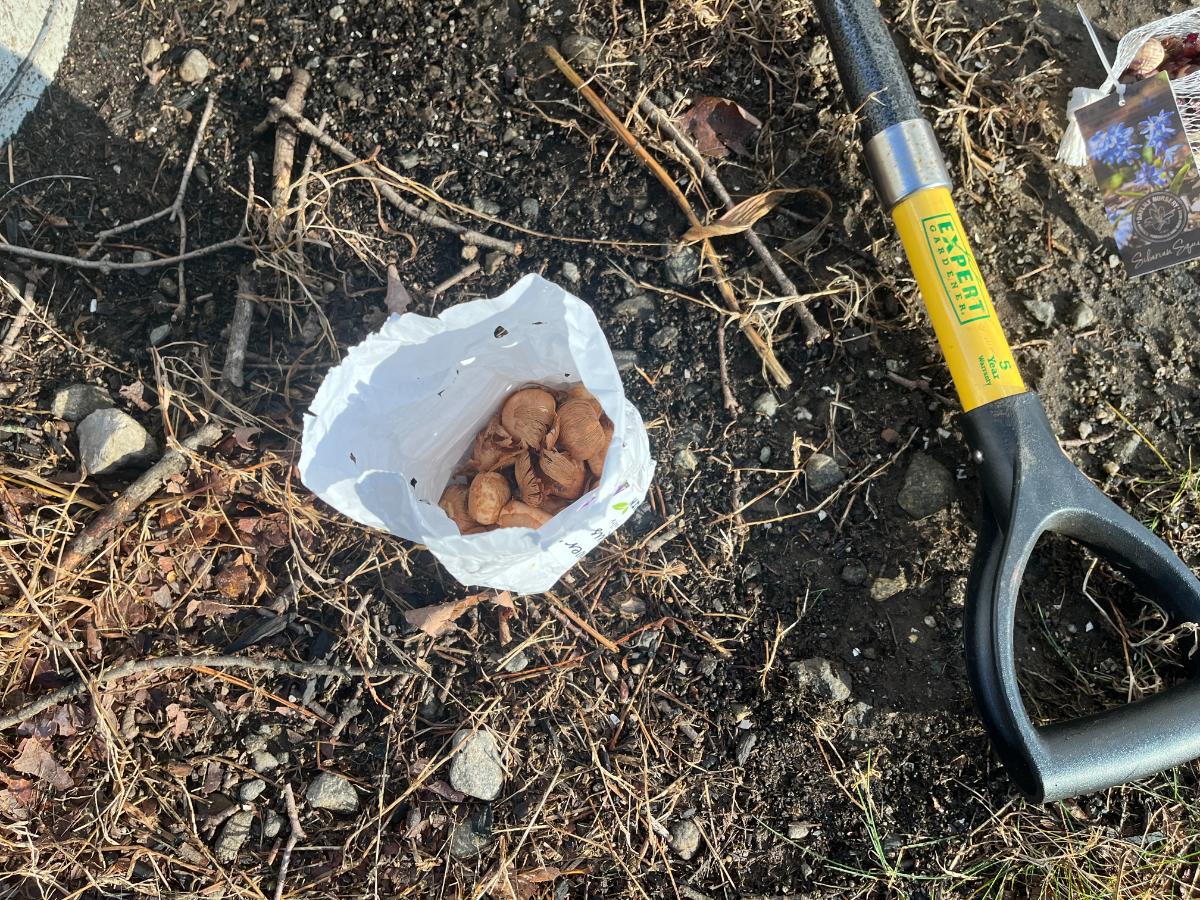
It’s great to know that there is still time for those of us gardeners who keep pushing it. Odds are, though, that if you’ve procrastinated through the fall, you’re feeling a bit behind by the time you get to that planting.
This is where you can bend (or maybe outright break) some of the bulb planting “rules”. It’s okay to bend the rules and make faster work of your late bulb planting. Your flowers will forgive you. Your garden will be gorgeous.
But you can use this for on-time bulb planting, too!
Here’s another truth: the fast and easy method of bulb planting that we’re about to explain doesn’t have to be used only by procrastinators who are late to the bulb planting game.
Really, anyone can do this at any appropriate bulb planting time of year and for any type of flowering bulb.
You could even use this simple planting method in the spring, for summer flowering bulbs (like, bulbs that shouldn’t be in the ground over the winter).
Whole Bag Clump and Dump Bulb Planting Method: How To
Credit for this planting method goes to Boston, Massachusetts, area gardening coach Jess Zander of You Can Do It Gardening. It’s unclear whether she “created” the method, but she’s been instrumental in spreading the word.
Her goal is to make gardening and landscaping accessible to the average homeowner. One thing she works hard towards is breaking the barriers to gardening, especially those that overcomplicate it (like saying you only have a tiny little window to plant fall bulbs or they all have to be perfectly and artfully placed).
In this method, you just plant the whole bag of bulbs basically in one clump:
- Set out your bags of bulbs where you want each type to grow.
- Dig down in each spot, about a shovel’s width wide (wider if you want the bulbs spread out more).
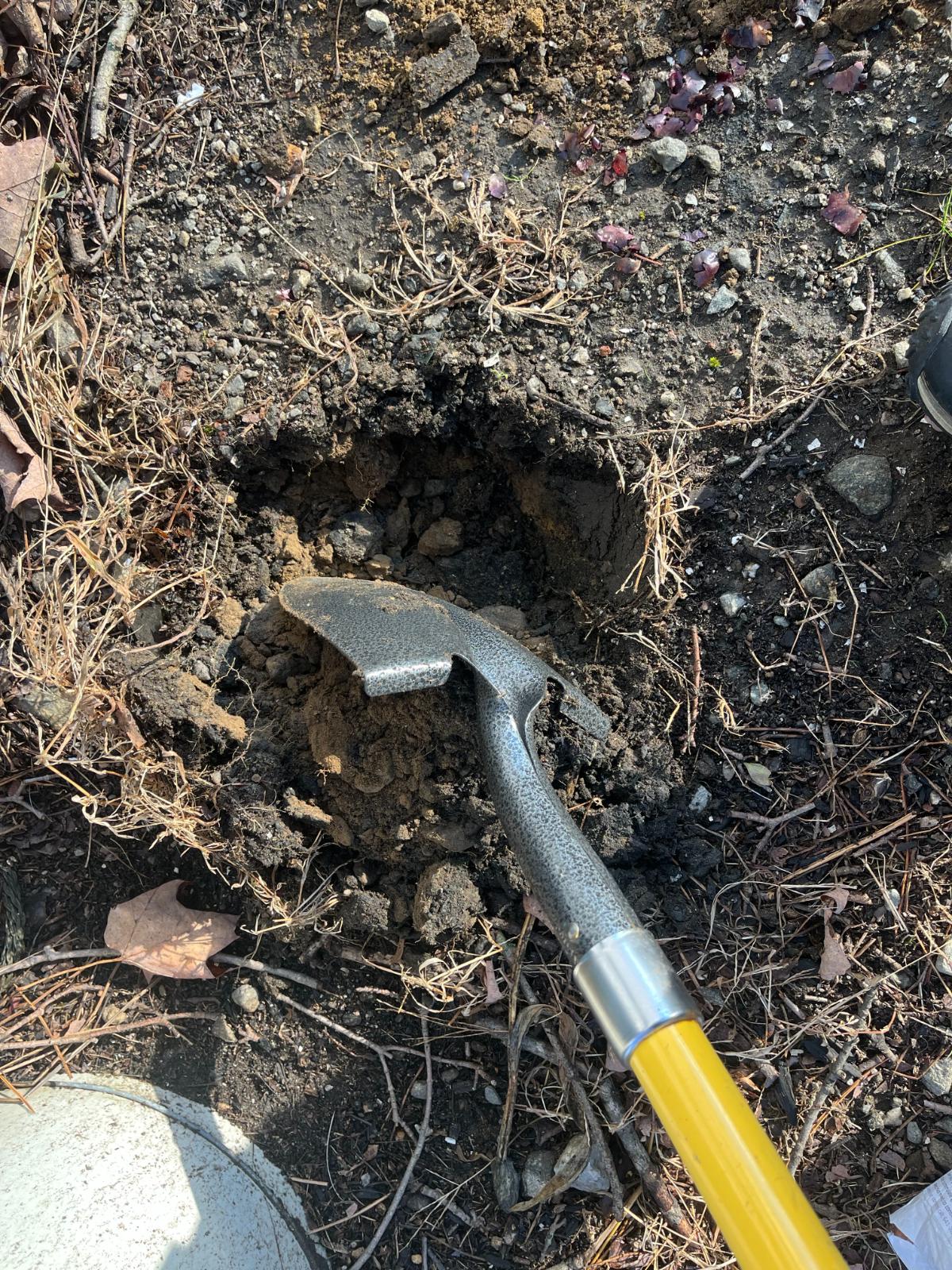
- Make the depth of your hole whatever the required planting depth is for the type of bulbs you are planting.
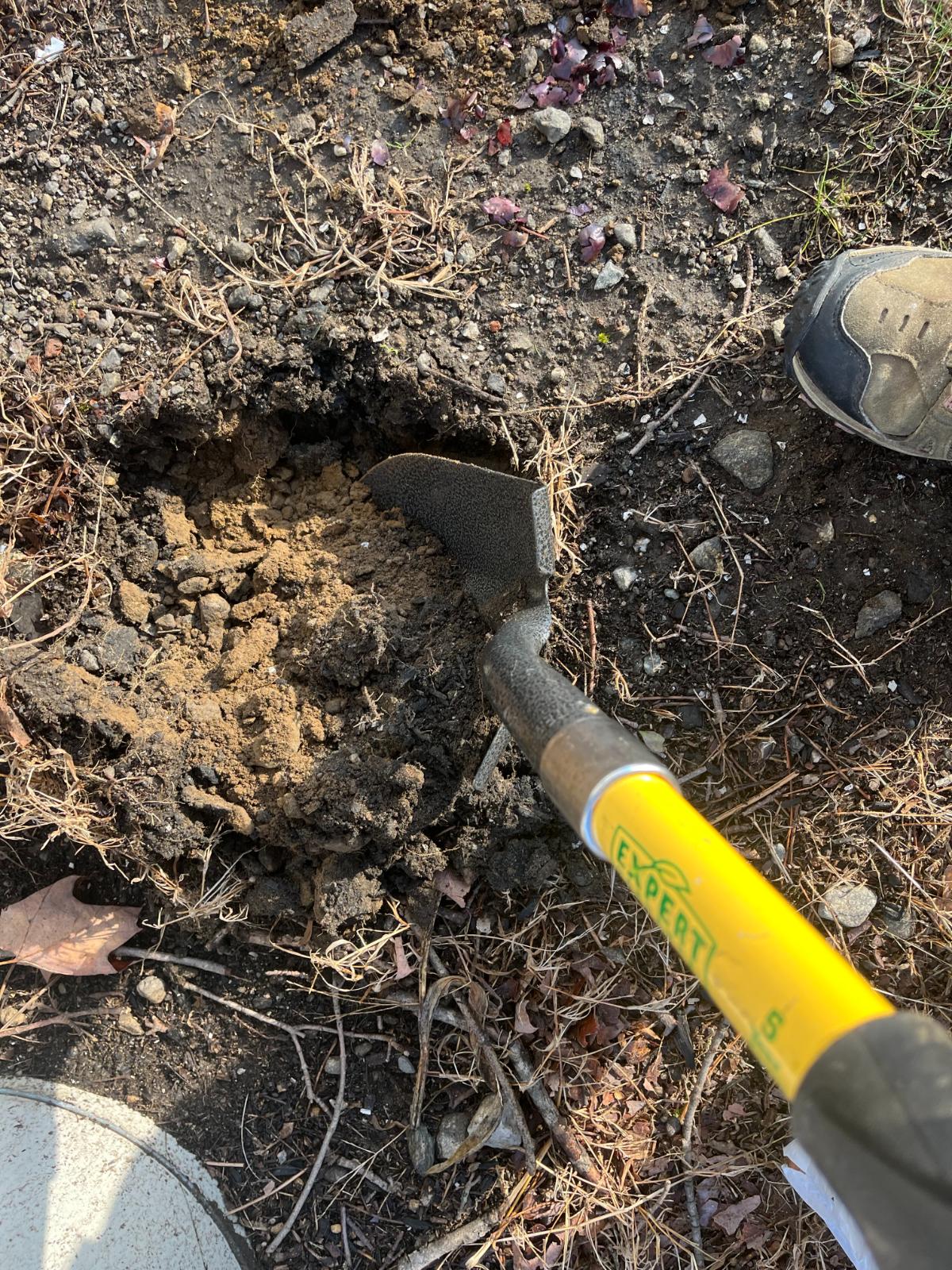
- If you’re not sure how deep to plant your bulbs, a depth of two to three times the height of the bulbs is a good rule to follow.
- Now, just dump the whole bag of bulbs in the planting hole.
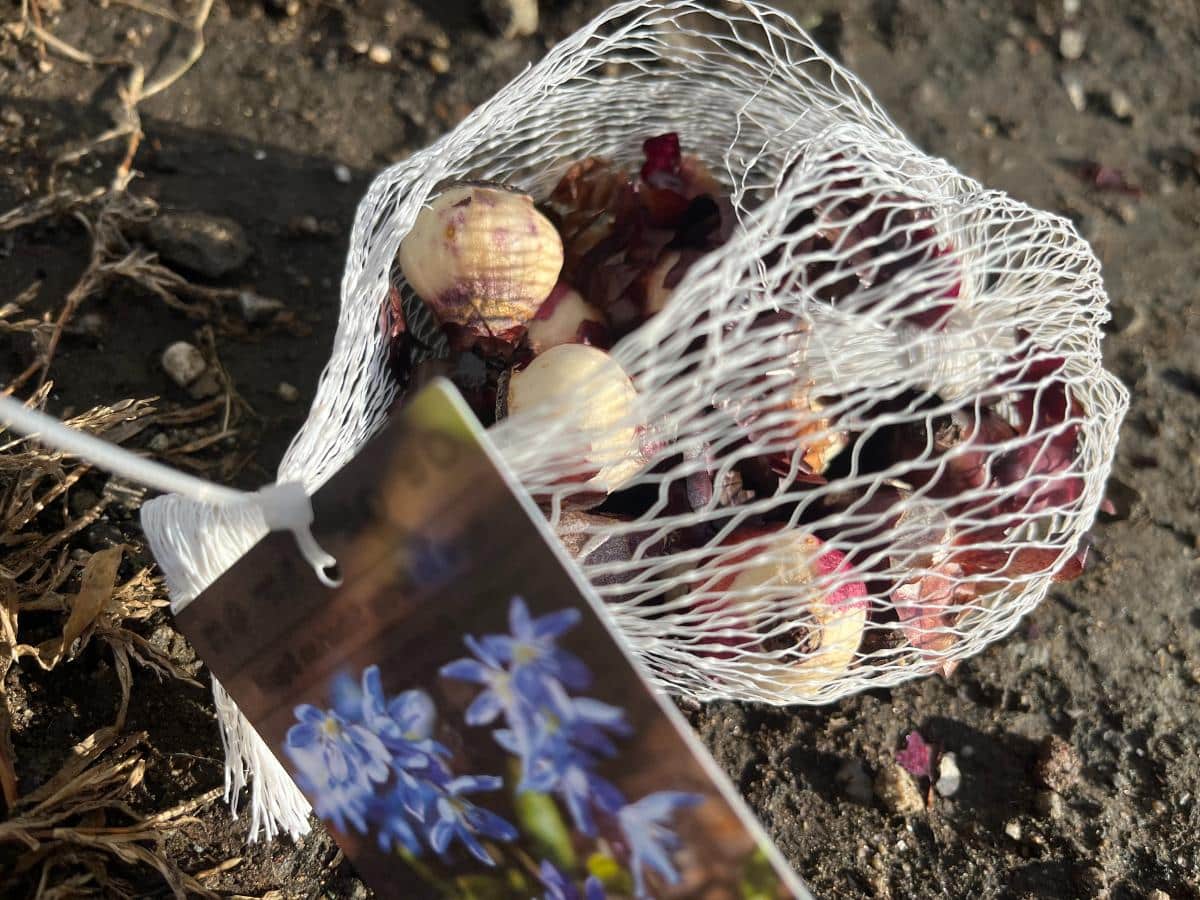
- Re-cover with the loose dirt, then tamp it down.
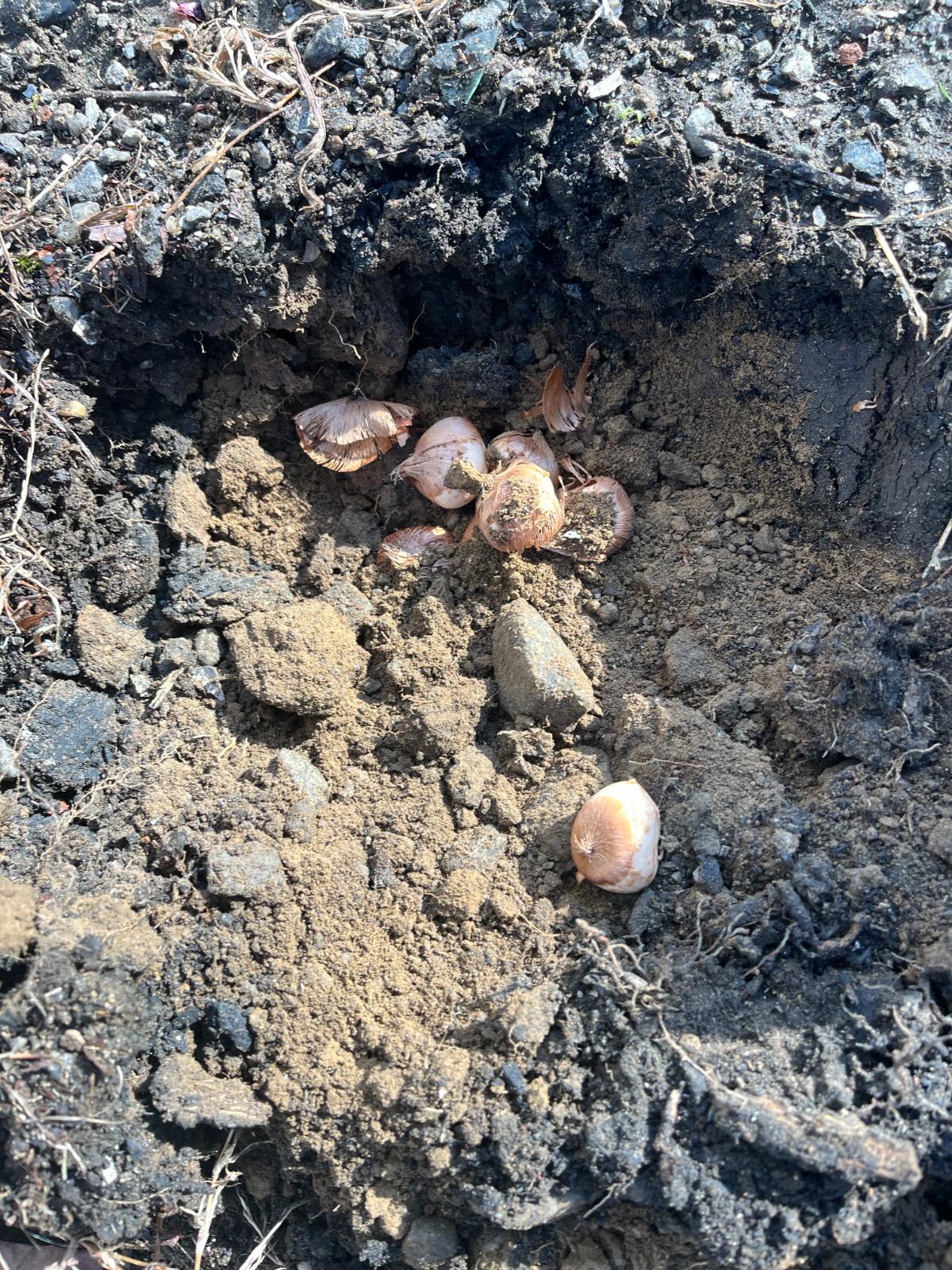
- You’re done! A whole bag of bulbs planted in just a minute!
- Repeat for as many bags of bulbs as you have to plant.
What will your bulb garden look like when you use the Clump and Dump Whole Bag bulb planting method?
In the spring, what you will have are roughly round areas of each bulb variety. They will come up as a sort of bouquet shape. This will look a lot like bulbs that have been in the ground and established over several years. Like bulbs that have multiplied in the ground on their own.
In fact, this method is a good way to create the illusion of an older, established planting in a new garden or landscape area. Instead of having a few single flowers poking up, you’ll have a full area that will look like it’s been growing there for years.
The closer you plant your bags of bulbs together, the fuller the look of your garden bed will be.
The bulbs will spread and expand over the years, but if you want to get there faster and fill a bed in, this is a great way to do it!
An alternative option so you don’t have clumps of single bulb types:
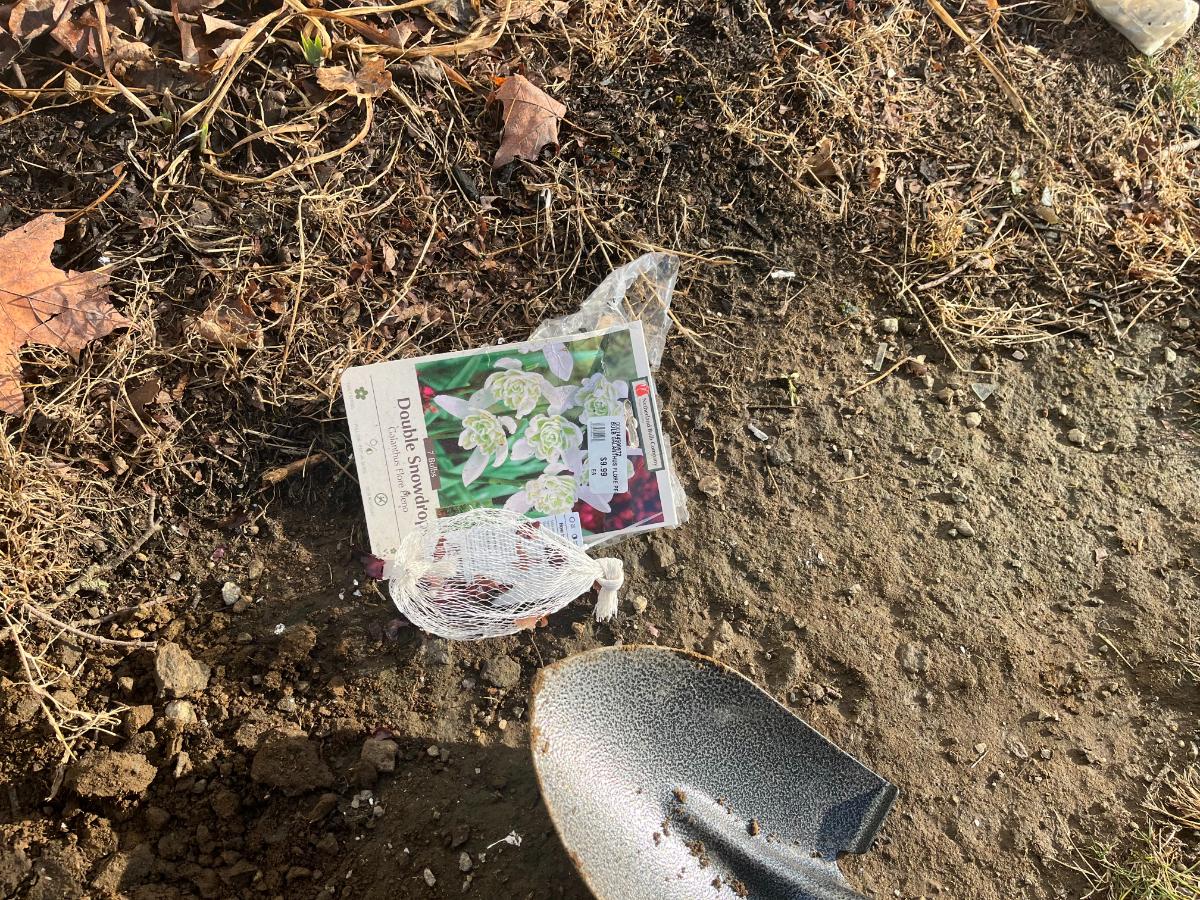
If you want more variety and a more mixed and random garden bed, you can mix the bulbs together before you place and plant them.
- Before you plant, mix different types of bulbs together in a bucket
- For example, you could mix daffodils with tulips, or
- Mix different colors and varieties of the same type of bulb together in a randomized mix -- like classic yellow daffodils with white and pink varieties or traditional single-centered daffodils with double flower varieties
Just be aware that with this method, you may have more competition among the different types of bulbs.
Larger bulbs may overtake or crowd out smaller varieties.
You may want to only mix bulbs of similar size.
You may also want to make a bit of a larger planting hole so you can spread them out more to reduce competition.
What about bulb direction and growth?

Clearly, this method does not follow the rules about placing each bulb exactly in the “proper” growing direction. You’re dumping the bag in, so some bulbs may land on their side or upside down (though if you look, you might be surprised at how many right themselves when they land).
This isn’t a problem to speak of. While it may be “correct” and more ideal to plant bulbs with the root end down and the sprout side up, even if the bulbs are completely upside down, they will find their way to the surface.
Bulbs are tough. In nature, their conditions aren’t always perfect. When squirrels or chipmunks rehome your bulbs, they seldom pay attention to which end is up. And yet, the bulbs grow anyway!
Bulbs that land on their side or on their top will just grow around themselves when they start to sprout, and then when they sense the right direction, they’ll push to the top of the ground.
Now, to be sure, perfect directional placement is preferable. So, if you’re unsure about letting bulbs land as they may, go ahead and take an extra minute and point the bulbs with the pointy, sprouting end up.
This won’t add any appreciable amount of time to your project. Instead of one minute, it might take two.
Sometimes, procrastinating bulb planting can really work out!
If your ground isn’t frozen, there is still time to get a good spring blooming garden in the ground, whether it be fall or winter. Given the unusual warm trends and late freezes many of us are experiencing, your procrastination might work well in your favor, giving the bulbs less time in the ground for fall sprouting, which isn’t ideal anyway.
With this “fast and bad” method of bulb planting, even a procrastinating gardener can get things planted, and look great doing it.
Happy [late] gardening!

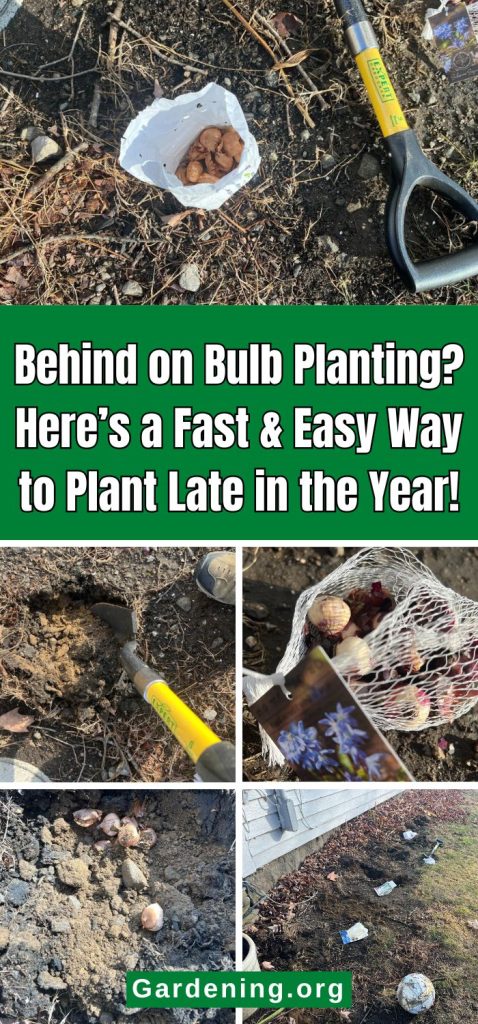
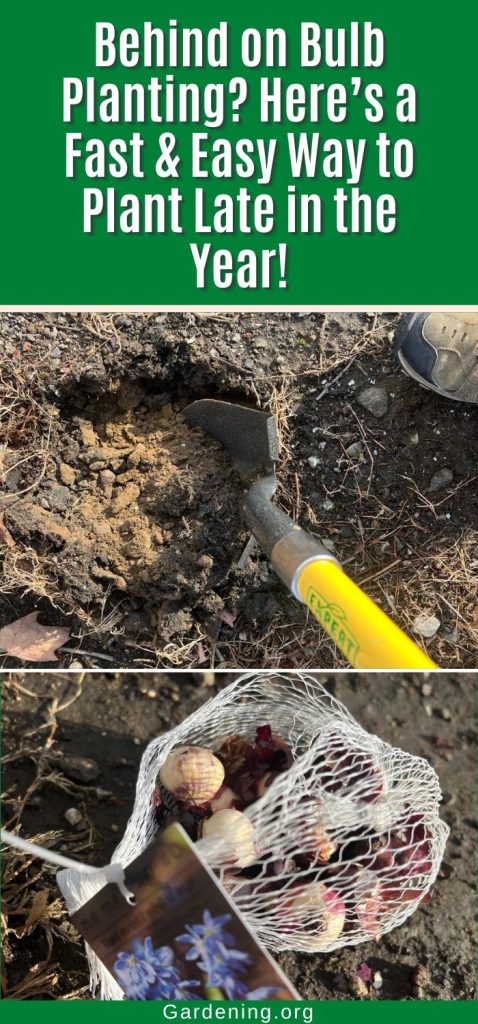
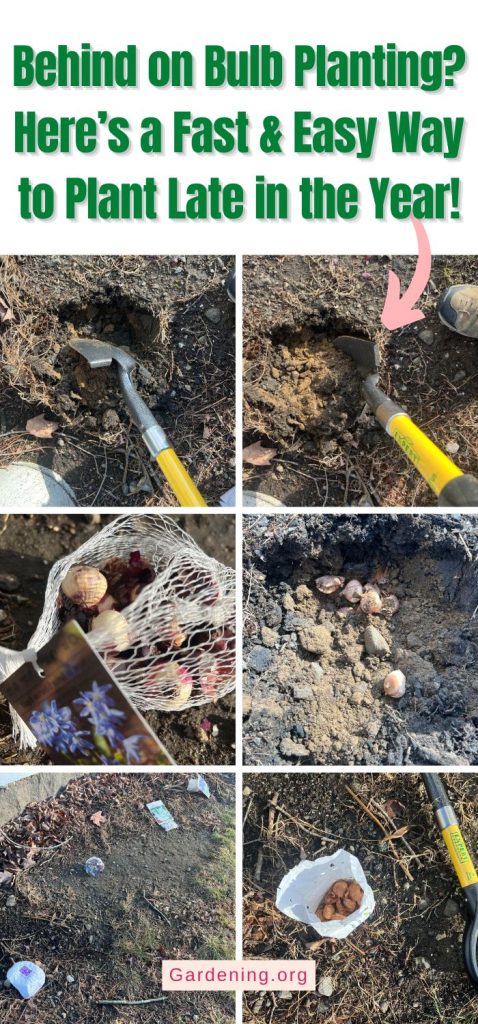
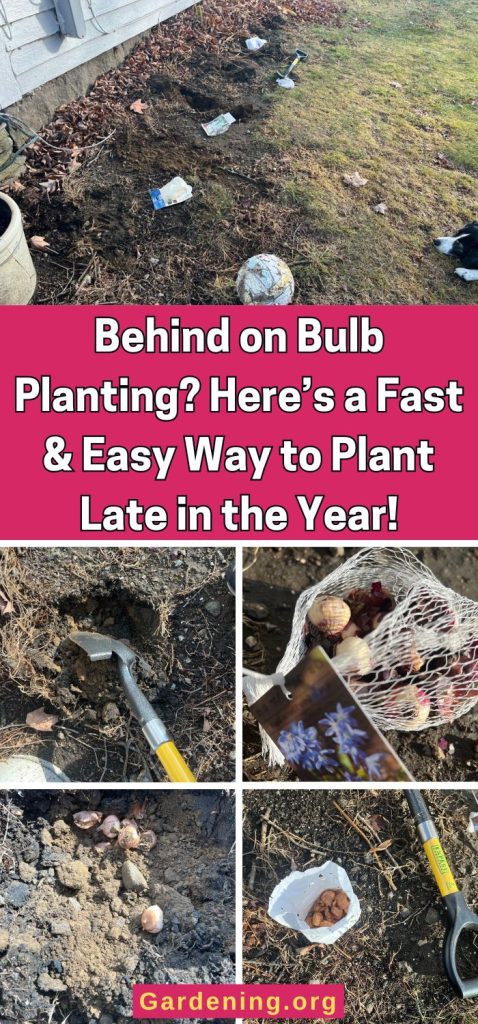




Leave a Reply